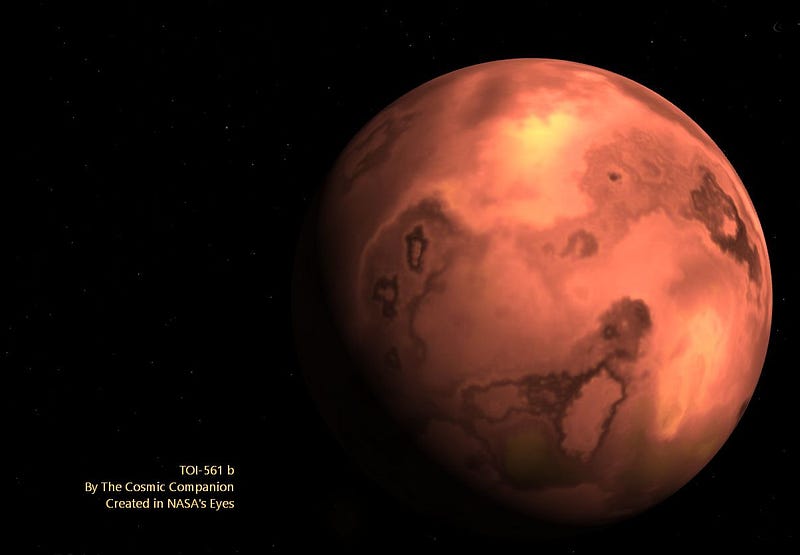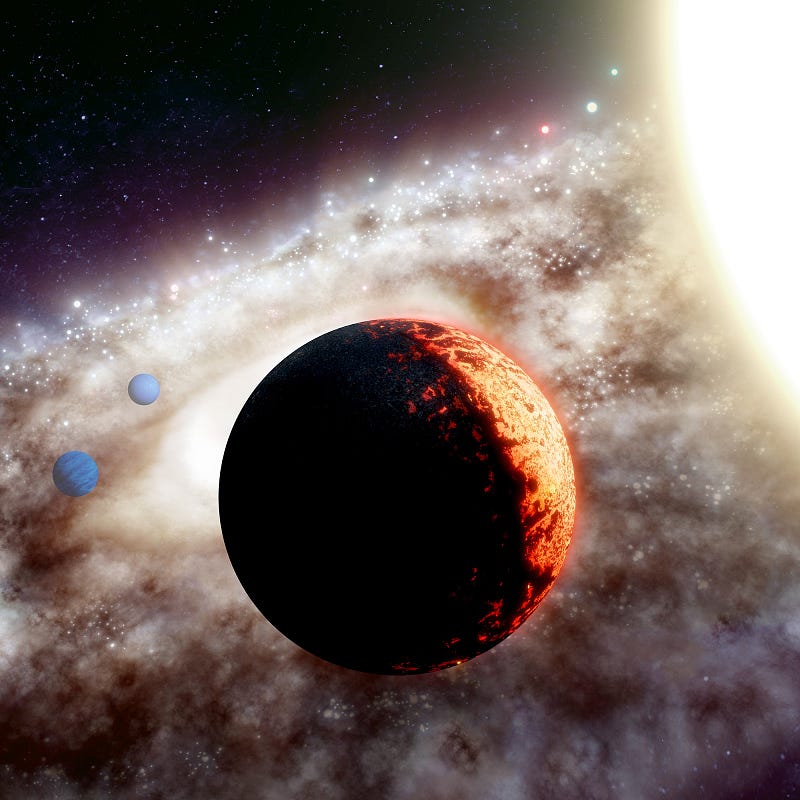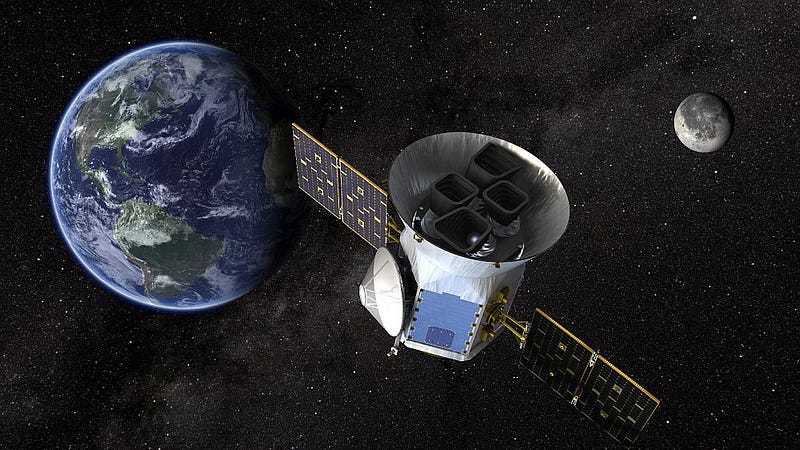Exploring the Scorching Exoplanet TOI-561 b
Written on
Chapter 1: Introduction to TOI-561 b
Meet the intriguing exoplanet TOI-561 b, a celestial body that has captured the attention of astronomers. This planet, located approximately 280 light years from our home, orbits one of the galaxy's oldest stars, and is characterized by its extreme conditions.

TOI-561 b is a fascinating world, about 50% larger than Earth, which completes an orbit around its star in just 12 hours. Positioned roughly 100 times closer to its star than Earth is to the Sun, this exoplanet experiences surface temperatures exceeding 2,000 degrees Celsius (3,630 degrees Fahrenheit). This temperature is nearly double that of molten lava found on Earth and surpasses even laboratory-studied magma.
Stephen Kane, a planetary astrophysicist from UC Riverside, highlights the extraordinary nature of TOI-561 b by stating, “For every day you’re on Earth, this planet orbits its star twice.” The TOI-561 planetary system is situated in a region of the Milky Way that is home to ancient stars, suggesting a long history of planetary formation.
Lauren Weiss from the Institute for Astronomy (IfA), who led the discovery team, explained, “The rocky planet orbiting TOI-561 is among the oldest rocky planets yet identified. Its presence indicates that rocky planets have been forming in the universe almost since its inception, about 14 billion years ago.”
Section 1.1: The Discovery of the TOI-561 System
In orbit around TOI-561, astronomers have identified three previously unknown exoplanets. This star resides within the thick disk of the Milky Way, a region known for its older stellar population.
“The stars in the thick disk are chemically unique, often containing fewer trace heavy elements, particularly iron, than typical Milky Way stars,” reports the Institute for Astronomy at the University of Hawaii. This unique composition suggests that these stars formed early in the universe's history, approximately 10 billion years ago.

Among these newly discovered worlds, TOI-561 b, while only slightly larger than Earth, possesses about three times its mass. This results in a density comparable to our planet, which was surprising since a higher density was expected. A lower density indicates that TOI-561 b may be an ancient exoplanet, potentially composed mostly of lighter elements due to the scarcity of heavy elements in the early universe.
Researchers noted in The Astronomical Journal that “Planet b's mass and density align with a rocky composition. Its lower-than-average density suggests an iron-poor composition, though an Earth-like iron-to-silicate ratio remains a possibility.”
The second planet, TOI-561 c, is nearly three times the size of Earth and completes its orbit every 11 days. It may also have a substantial atmosphere. The outermost planet, TOI-561 d, is two and a third times larger than Earth, orbiting its star every 25 days and 16 hours. Further studies may uncover more about these enigmatic worlds.
Subsection 1.1.1: The Role of TESS

The Transiting Exoplanet Survey Satellite (TESS), launched in April 2018, played a crucial role in discovering these planets. As these celestial bodies passed in front of their star from our perspective on Earth, astronomers observed dips in the star's light. Follow-up observations at the Keck Observatory measured the gravitational effects of the planets on their star, helping to determine their masses.
The star at the center of this system, designated TOI-561 (TESS Object of Interest 561), is about 80% the mass of our Sun and classified as a G-type star, similar to our own Sun. It continues to fuse hydrogen into helium, generating energy.
Additionally, evidence suggests the presence of two more planets in this system. TOI-561 e may have a mass six times that of Earth and orbits its star every 77 days, while TOI-561 f is thought to have a mass between two and five times that of Earth, completing its orbit every 16 days.
Chapter 2: Conclusion and Future Research
With over 4,400 exoplanets now known, the TOI-561 system stands out as a remarkable case study in planetary formation and evolution. The swift orbit of TOI-561 b reflects the rapid advancements in our understanding of these alien worlds.
Join James Maynard, founder and publisher of The Cosmic Companion, as he continues to explore the cosmos from his home in Tucson, Arizona.
The first video, titled "Super Earth TOI-561b," delves deeper into the characteristics and significance of this extreme exoplanet.
The second video, "The Mystery of Iron Worlds Like TOI-561b," examines the implications of TOI-561 b's composition and its relation to other iron-rich exoplanets.
Did you find this article enlightening? Join us at The Cosmic Companion Network for podcasts, weekly video series, informative newsletters, and more!